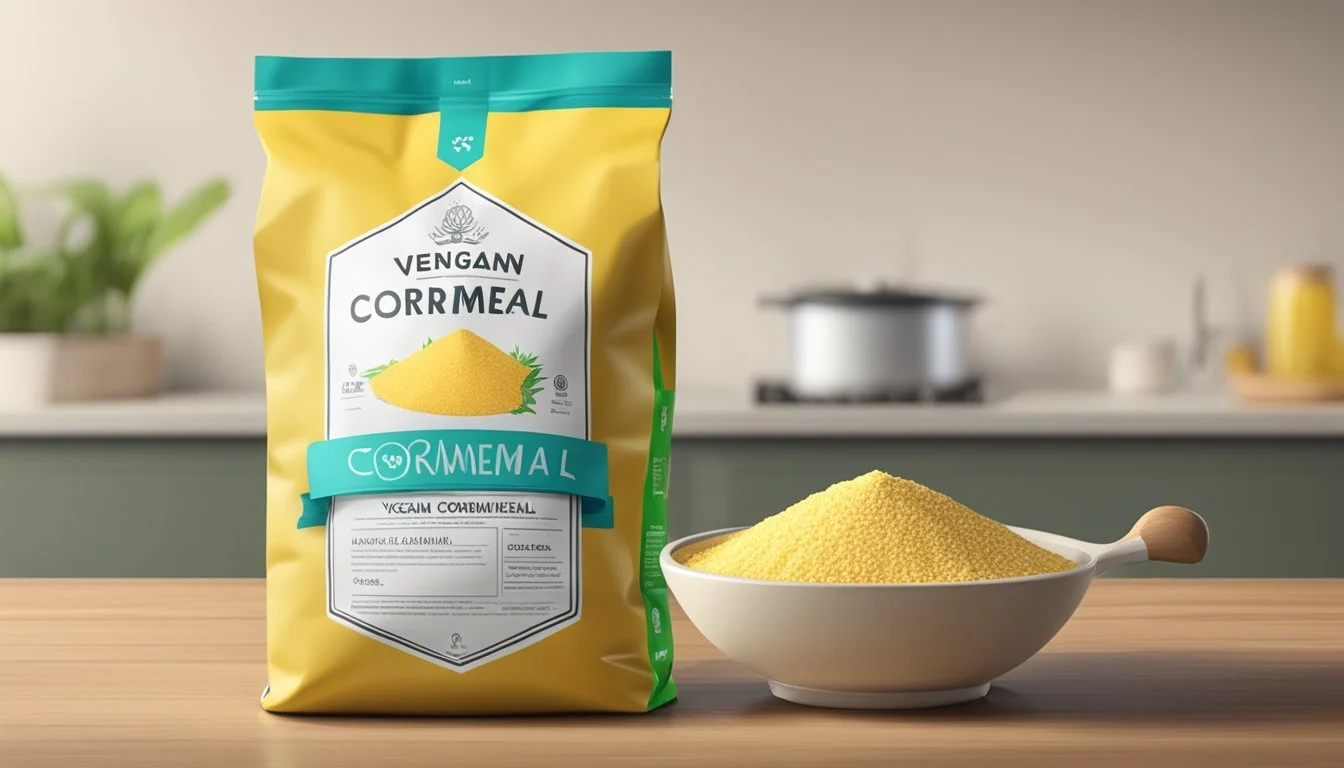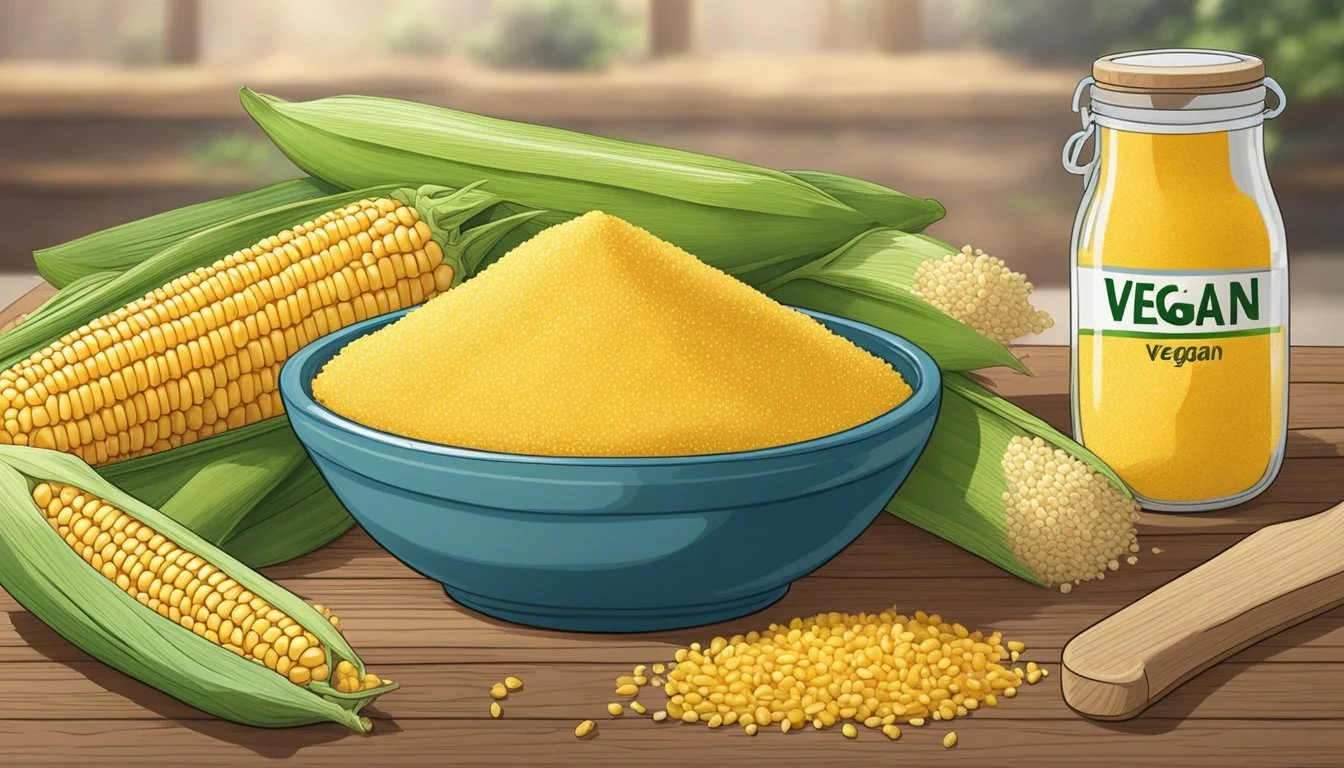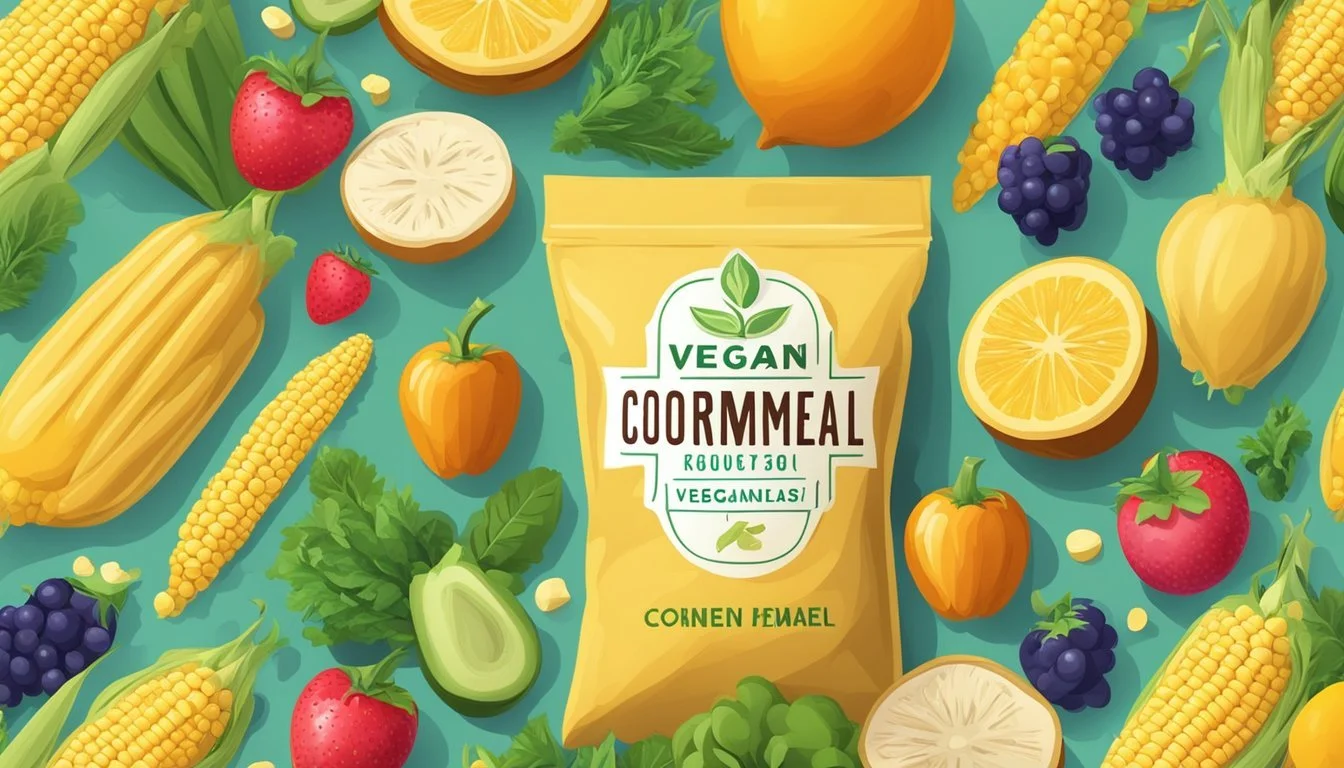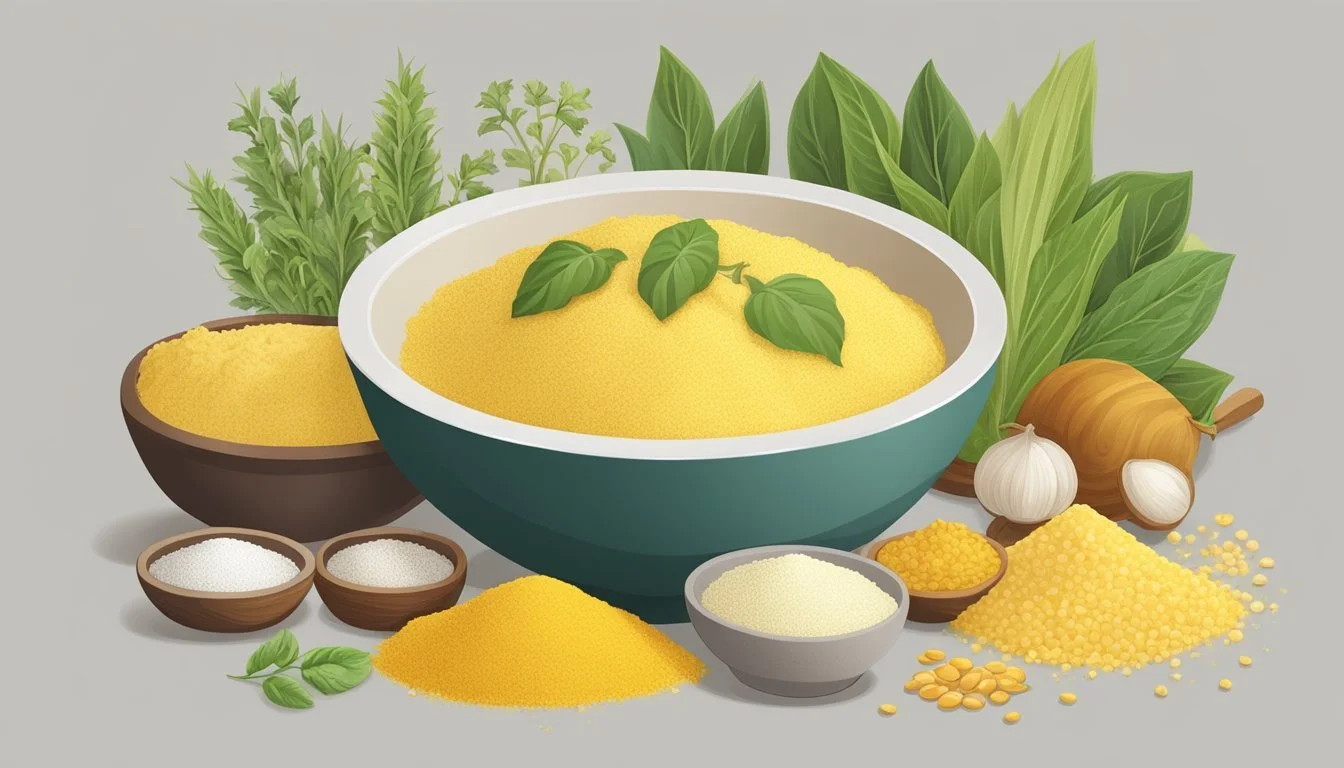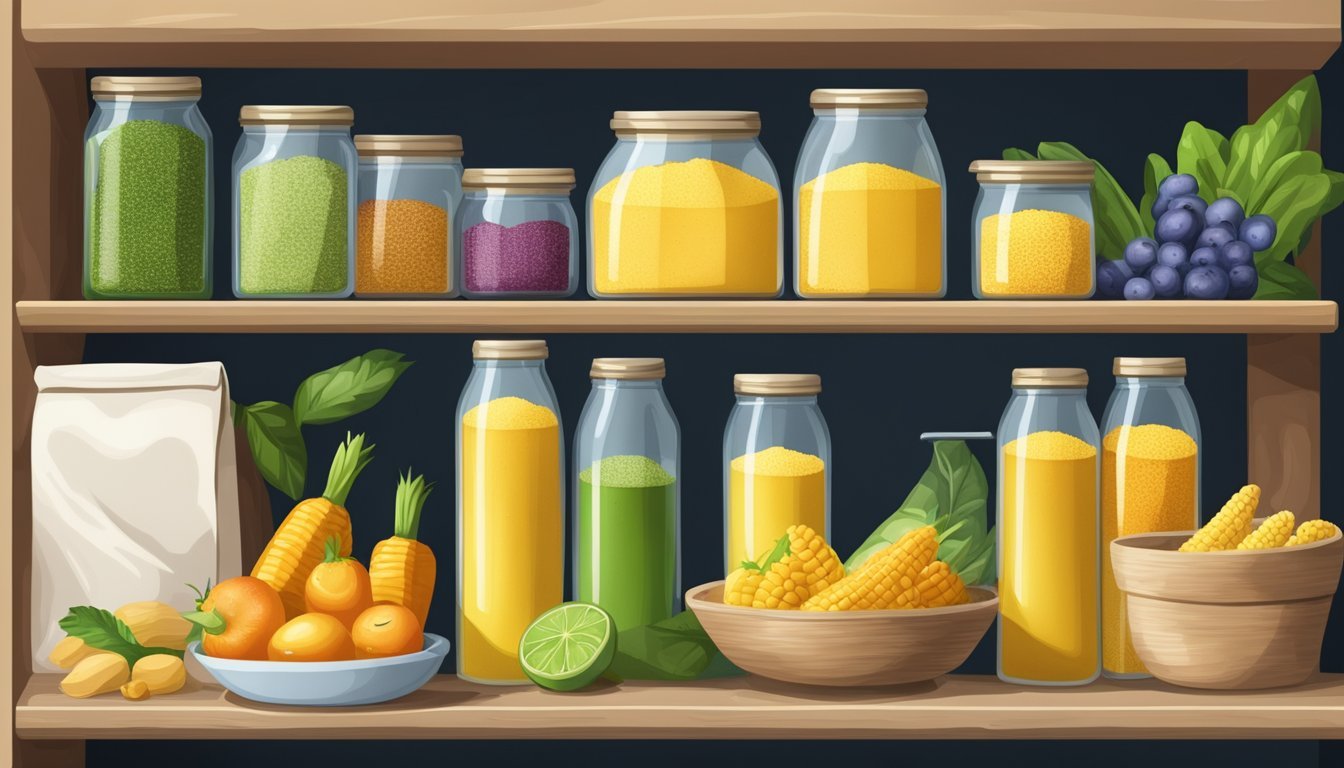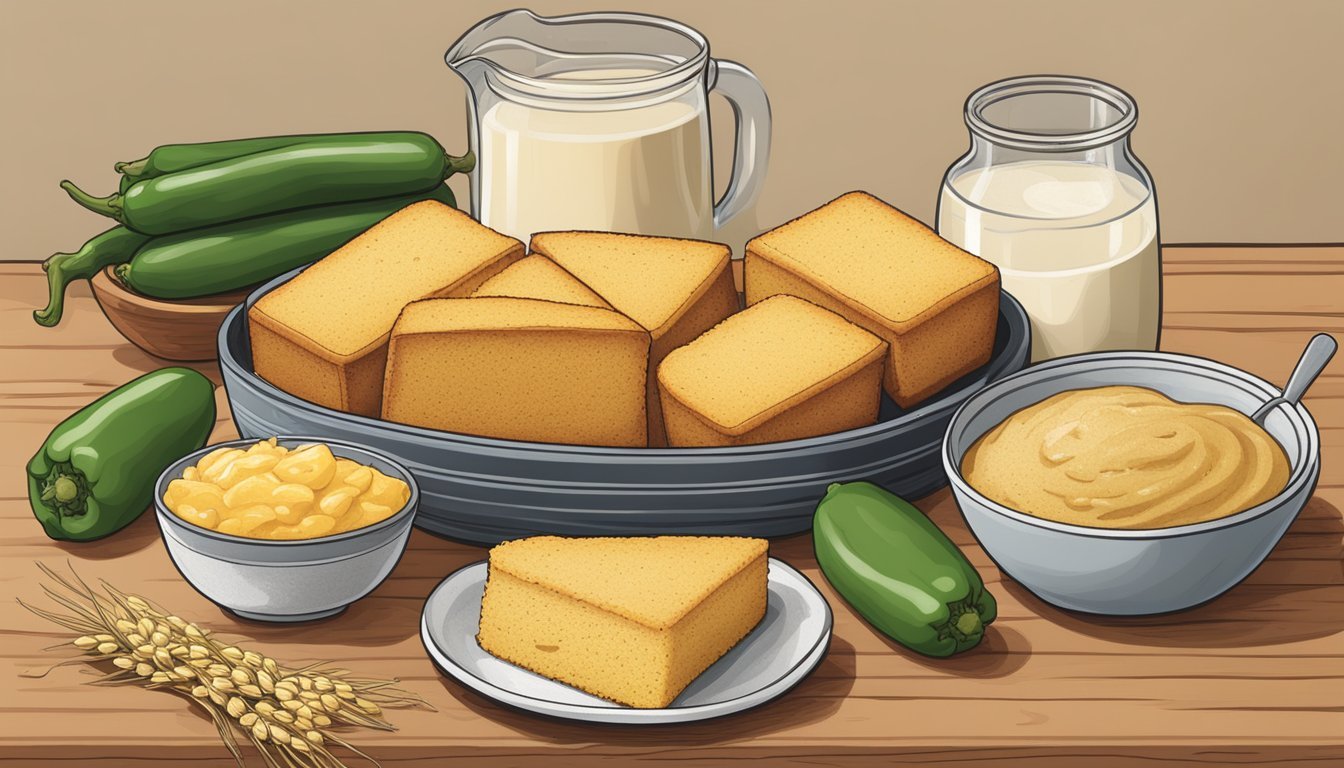Is Cornmeal Vegan?
Understanding Plant-Based Diets and Corn Products
Cornmeal, a flour substitute derived from dried corn, is a versatile and integral component in various global cuisines. It serves as the foundation for dishes such as cornbread, polenta, and a multitude of baked goods. As it is procured from a plant source, cornmeal naturally aligns with vegan dietary preferences, which strictly avoid animal products and byproducts.
The vegan diet encompasses plant-based foods while excluding meat, dairy, eggs, and all other animal-derived ingredients. Cornmeal fits perfectly within this plant-centric dietary framework and can be utilized to create vegan-friendly recipes. For individuals following a vegan lifestyle, cornmeal provides an excellent and reliable option for cooking and baking, given that no animal products are introduced in its processing or preparation.
What Is Cornmeal?
Cornmeal is a coarse flour obtained by grinding dried kernels of yellow corn. It is naturally gluten-free and serves as a staple ingredient in a variety of culinary applications around the world.
Cornmeal Vs. Flour
Cornmeal and wheat flour differ both in their source and texture. Whereas cornmeal comes from yellow corn and retains a coarse, gritty texture, wheat flour is derived from wheat and is typically finer and softer in texture. This difference affects the structure and texture in recipes, leading to variations like the crumbly consistency of cornbread.
Feature Cornmeal Wheat Flour Source Ground dried yellow corn Ground wheat kernels Gluten Gluten-free Contains gluten Texture Gritty, coarse Soft, fine Use Cornbread, polenta, breading Baking, thickening, pastries
Cornmeal Varieties
Cornmeal comes in several varieties, each differing slightly in texture and color because of processing differences. The primary types include:
Fine cornmeal: Resembles the texture of wheat flour, generally used to make a smoother, less crumbly product.
Medium-ground cornmeal: A versatile middle ground, often used in recipes like cornbread.
Coarse-ground cornmeal: Known for a robust texture ideal for polenta or grits.
While cornstarch is also a product derived from corn, it is not a type of cornmeal. Cornstarch is a fine, white powder used as a thickening agent, quite distinct in both use and texture from cornmeal.
Defining Veganism
Veganism is a lifestyle choice that eliminates the use of animal products for ethical, environmental, or health reasons. It's a commitment that extends beyond diet to include all areas of life.
Vegan Ingredients
A vegan diet includes a variety of whole foods such as fruits, vegetables, legumes, grains, nuts, and seeds. Specifically, vegan cooking utilizes ingredients like almond milk, soy milk, and vegan buttermilk as dairy substitutes. Sweeteners like agave, maple syrup, and coconut sugar are commonly used in place of honey or refined sugar, which may be processed with animal-derived substances.
Plant-Based Alternatives
In vegan cuisine, traditional dairy products are replaced with plant-based alternatives. For instance:
Vegan butter: Derived from plant oils, this is used in a similar way to dairy butter.
Olive oil: Often used for cooking or dressings, olive oil is a staple in vegan kitchens.
Plant-based milks:
Almond milk: Suitable for cereal, baking, and drinks.
Soy milk: Known for its high protein content, it's a common milk alternative.
Plant-based alternatives are chosen not only for their taste and texture but also for their lower environmental impact and alignment with vegan ethics, which advocate for the minimization of harm to animals.
Cornmeal in Vegan Cooking
Cornmeal is a versatile ingredient that can be incorporated into a plethora of vegan recipes, from the sweet and satisfying vegan cornbread to savory pancakes. Both gluten-free and standard cornmeal options are available, catering to those with dietary restrictions without compromising on flavor.
Vegan Cornmeal Recipes
Cornmeal is a staple in vegan cooking, providing texture and substance to an array of dishes. Among the most beloved recipes are vegan cornbread and cornbread muffins, which often substitute traditional dairy with plant-based milks and use sweeteners like sugar or maple syrup to enhance flavor. To make a vegan cornbread, one would mix dry ingredients such as cornmeal, flour, baking powder, and salt, then add in wet ingredients including plant-based milk with a dash of apple cider vinegar to mimic buttermilk, along with a binding agent such as oil.
Savory Recipes: Savory vegan recipes utilizing cornmeal include pancakes or polenta, enriched with herbs and spices to complement the cornmeal's natural flavors.
Sweet Recipes: When crafting sweet vegan recipes, cooks can mix cornmeal with cinnamon, nutmeg, or vanilla, creating delicious and comforting desserts.
Gluten-Free Considerations
A significant benefit of cornmeal is that it is naturally gluten-free. However, consumers should ensure that it is labeled as such to prevent cross-contamination with gluten-containing grains during processing.
Cornmeal: It should be sourced from facilities dedicated to gluten-free products to ensure its purity.
Gluten-Free Cornbread: To make gluten-free vegan cornbread, one must use gluten-free all-purpose flour or a blend of gluten-free flours for structure. They should also confirm that all additional ingredients, such as baking powder, are also certified gluten-free.
Cornmeal's flexibility makes it an excellent choice for those following a vegan and gluten-free diet. It allows for a range of recipes that can be tailored to taste preferences, be it sweet or savory, while also accommodating gluten sensitivity.
Ingredients Profile
When considering whether cornmeal is vegan, it's crucial to examine both the nutritional content and the common ingredients frequently paired with cornmeal in recipes.
Nutritional Information
Cornmeal is predominantly composed of carbohydrates, with a substantial calorie count typical of cereal grains. A 100-gram serving provides the following approximate nutritional values:
Calories: 370 kcal
Carbohydrates: 77 g
Protein: 7 g
Fiber: 7 g
Fat: 3.9 g
It should be noted that while cornmeal itself is a vegan product, nutritional content can vary based on additional ingredients incorporated into recipes.
Common Ingredients
Cornmeal is often used as the base for many dishes, including but not limited to breads, pancakes, and porridge. Common vegan ingredients combined with cornmeal include:
All-purpose flour: Provides structure to baked goods.
Baking powder and baking soda: Act as leavening agents.
Sea salt: Enhances flavor.
Cane sugar or brown sugar: Adds sweetness.
Fat sources (e.g., plant-based oils): Contribute to moisture and texture.
Apple cider vinegar: Reacts with leavening agents to help the mixture rise.
When preparing vegan cornmeal recipes, all additions should be scrutinized to ensure they do not contain animal derivatives, maintaining the vegan quality of the dish.
Vegan Cornbread Detailed
Making vegan cornbread allows individuals following a plant-based diet to enjoy this classic comfort food. This section delves into the specific aspects of texture and flavor that make vegan cornbread delightful, as well as providing tips for creating the perfect loaf.
Texture and Flavor
Vegan cornbread typically strikes a balance between a soft interior and a crispy or crunchy crust. It isn't uncommon for the bread to take on a golden-brown color as it bakes. The corn flavor should be pronounced, with the natural sweetness of cornmeal coming through. Some recipes might add a touch of sugar to enhance the sweetness, but it's important for the sweetness to support, not overwhelm, the cornbread's characteristic savoriness.
Tips for the Perfect Vegan Cornbread
To achieve impeccable vegan cornbread, consider these key tips:
Consistency of Batter: The batter should be thick but pourable. If it's too runny, the bread might not set properly, and if it's too thick, the bread could end up too dense.
Baking Temperature and Time: Preheat the oven as directed – usually between 350°F to 400°F. Insert a toothpick into the center of the cornbread near the end of the baking time; if it comes out clean, the bread is done.
Non-Dairy Buttermilk: Many recipes call for a vegan buttermilk made by combining a non-dairy milk with an acid like lemon juice or apple cider vinegar. This helps to give the bread a tender crumb.
Variations: Vegan cornbread can be made into muffins or served as a side dish. They pair excellently with vegan chili or can be enjoyed with a spread of jam.
By adhering to these instructions and maintaining the integrity of flavor and texture, one can bake vegan cornbread that is both delicious and true to tradition.
Pairing and Serving Ideas
Cornmeal is a versatile ingredient that often features in vegan cooking, particularly in the form of cornbread. When serving cornbread or dishes that incorporate cornmeal, there are various vegan accompaniments that can enhance the flavors and textures of the meal.
Accompaniments for Cornbread
Cornbread pairs excellently with a variety of vegan dishes. For a warming and satisfying meal, one might serve it alongside stews or soups. A classic vegan chili brimming with beans, vegetables, and spices serves as an ideal partner for cornbread, as it complements the bread's texture and sweetness while providing a hearty, comforting experience. Consider the addition of chipotle for a smoky note or rosemary for an aromatic touch to the cornbread itself to match these robust flavors.
In terms of salads, cornbread can be served with an array of fresh greens or vegan salads that incorporate fruits such as cranberries which provide a tart contrast to the cornbread's subtle sweetness.
Vegan Cornbread as a Side Dish
As a side dish, cornbread can take a simple meal to the next level. For instance, cornbread can accompany a bowl of butternut squash soup, where its sturdiness is ideal for dipping and soaking up the rich, creamy flavors of the soup. Additionally, vegan cheddar can be included in the cornbread recipe for a cheesy twist that complements the soup.
Cornbread can offer a pleasant contrast when paired with lighter items like fruit salads. The juxtaposition between the cornbread's savory taste and the fruit's freshness results in a balanced and delightful dining experience.
Storage & Freshness
Proper storage of cornmeal and cornbread is crucial for maintaining freshness. Using an airtight container is key to protect the integrity of these products, particularly when storing in a pantry, refrigerator, or freezer.
Keeping Cornbread Fresh
For optimal freshness, one should store cornbread in a cool, dry place, ideally in an airtight container. If made from scratch, the prep time and cook time can affect its initial quality, so it's important to let the cornbread cool completely before storing to avoid moisture build-up, which can lead to mold. Cornbread stored at room temperature usually remains fresh for about 1 to 2 days. For a gluten-free version of cornbread, the same storage principles apply.
Freezing and Reheating
Cornbread and leftover cornmeal can be frozen for long-term storage. Wrap the cornbread tightly in plastic wrap or aluminum foil, then place it in an airtight container or freezer bag to prevent freezer burn. Total time for cornbread stored in the freezer can be up to 3 months for best quality. To reheat, one doesn't need to thaw the cornbread; it can go directly from the freezer to the oven. Preheat the oven to 350°F and place the cornbread on a baking sheet or in a cast iron skillet for about 10-15 minutes or until heated through.
Diverse Vegan Cornbread Variations
Exploring the versatility of vegan cornbread reveals a delightful world of textures and flavors. From the traditional skillet cornbread to innovative add-ins, there are numerous ways to tailor vegan cornbread to suit any preference or dietary requirement.
Creative Add-Ins
For those looking to infuse their vegan cornbread with a burst of flavor, the addition of blueberries can transform an ordinary recipe into a fruit-infused delicacy. Incorporating blueberries not only adds sweetness and moisture but also contributes to an appealing, colorful presentation.
Sweet Enhancements:
Blueberries
Jam swirls for a fruity kick
Apple sauce to naturally sweeten the batter
Savory Options:
Fold in sautéed onions or jalapeños for a spicy touch
Add vegan cheese shreds for a cheesy twist
Stir in a handful of grits for extra texture
Texture Boosters:
Crumble a mixture of oats and nuts atop the batter before baking for a crunchy topping
Sunflower or pumpkin seeds embedded within provide a nutty bite
Adapting Recipes for Dietary Restrictions
When accommodating additional dietary restrictions, substitutions are key. Whether it's for personal health reasons or due to allergies, making sure all guests can enjoy vegan cornbread is feasible with the right modifications.
Oil Substitutes:
Replace traditional fats with coconut oil for a subtle, tropical flavor
Select a neutral-flavored oil, such as canola or vegetable, to maintain the classic cornbread taste
Applesauce serves as a healthier alternative, adding moisture without the fat
Gluten-Free Needs:
Use a gluten-free flour blend in place of regular flour
Assure that all add-ins, like baking powder, are certified gluten-free
The ability to adapt vegan cornbread recipes to include creative add-ins or to accommodate various dietary restrictions showcases the flexibility of this beloved dish. Through thoughtful ingredient choices, vegan cornbread remains a comforting staple that can be enjoyed by everyone.
Engagement and Community
In this section, they will explore methods of showcasing cornmeal's vegan-friendliness and encouraging community involvement through social media sharing and the collection of feedback.
Sharing on Social Media
Individuals and brands often share their vegan cornmeal recipes on platforms like Instagram, Facebook, and Pinterest to gain visibility and engage with the vegan community. When sharing, one should consider highlighting:
Ingredient Notes: Specify if substitutions can be made to accommodate other dietary preferences.
Servings: Include the number of servings to help people plan their meals.
Instagram can be particularly useful for showcasing the aesthetic appeal of vegan cornmeal dishes with high-quality images. On platforms like Pinterest, sharing visually appealing recipe pins can drive traffic to one's blog or website.
Gathering Feedback
Encouraging users to leave feedback, such as ratings and reviews, is crucial for community engagement. Feedback assists others in determining the quality of the recipe and can provide valuable insights for recipe improvement. To effectively gather feedback:
Ask users to comment on their experience with the recipe directly on the blog or social media post.
Engage with the community by responding to comments and thanking them for their input, whether it’s a suggestion or a compliment on the dish.
This type of interaction not only fosters a sense of community but also helps in quickly addressing any concerns or questions regarding the recipe.

